why does my cat huff at me
My cat huffs at me and it can be confusing or slightly concerning. It’s important to understand why cats huff in order to better understand their behavior. Cats huff for a variety of reasons, such as expressing fear or stress, communicating that they’re overstimulated, or asserting themselves in a certain situation. Understanding the context of why your cat is huffing can help you better appreciate their behavior and ultimately help you to better bond with your feline friend.
Understanding Your Cat’s “Huffing” Behavior – What It Means and How to Respond
Cats can make many different kinds of vocalizations, including huffing. This noise usually sounds like a short, low-pitched grunt or an exhaled breath. It is often accompanied by a slight body movement, such as a head or neck jerk.
Huffing is an important communication tool for cats. It is typically a sign of discomfort or dissatisfaction, and can be a warning sign that your cat is feeling frustrated or stressed. It is important to recognize your cat’s huffing behavior and to understand how to respond in a way that is both gentle and supportive.
Firstly, it is important to recognize the situations in which your cat is huffing. If your cat is huffing when you are petting them, this may be a sign that they are overstimulated and need a break from your attention. If your cat is huffing when someone else is petting them, this may be a sign that they are not comfortable with that person. In these cases, it is best to give your cat some space and allow them to come to you when they are ready.
It is also important to consider the environment in which your cat is huffing. If your cat is huffing in response to other animals or people in the house, it may be a sign that they are feeling threatened. In this case, it is important to ensure that all animals and people in the house are respecting your cat’s boundaries and giving them the space they need.
When responding to your cat’s huffing, it is important to be gentle and understanding. Avoid reacting in a negative way, as this can cause your cat to become even more stressed. Instead, try speaking to them in a low and soothing voice, or offering them a treat as a distraction.
In summary, huffing is an important communication tool for cats and is often a sign of discomfort or dissatisfaction. It is important to recognize the situations in which your cat is huffing and to respond in a gentle and supportive way. If the huffing persists, it is best to seek advice from a veterinarian or animal behaviorist.
Exploring the Reasons Behind a Cat’s Huffing and How to Help
Cats are known for their mysterious and sometimes mysterious behavior. One of the more curious behaviors cats display is huffing. Huffing is a vocalization that cats make when they are feeling either threatened or agitated. It is a short, sharp sound that can be quite startling. In this article, we will explore the reasons behind a cat’s huffing and how to help.
Generally, a cat will huff when it feels threatened or is in an uncomfortable situation. This can include if a strange person or animal is in the house, if it is startled or if it is stressed. It is important to recognize the signs of stress in cats. These can include dilated pupils, excessive grooming, or hiding. If your cat is exhibiting any of these behaviors, it is important to take steps to alleviate their stress.
One way to help a cat who is huffing is to provide a safe, quiet space away from the cause of their distress. If possible, it is best to remove the source of their stress. This may mean removing an unfamiliar person or animal from the house. It is also important to ensure the cat has plenty of hiding places and toys to play with. This will help to distract them and reduce their stress.
If your cat is exhibiting signs of aggression, such as hissing or swatting, it is important to take steps to stop the behavior. This may include discouraging the cat from displaying aggressive behavior, such as providing a safe space away from the source of the aggression and providing opportunities for positive reinforcement.
It is important to remember that cats are creatures of habit and can become easily stressed. If a cat is exhibiting huffing behaviors, it is important to take steps to reduce their stress and provide a safe and comfortable environment for them. With patience and understanding, you can help your cat overcome their huffing behaviors.
How to Read Your Cat’s Body Language: What the Huffing Means
Understanding your cat’s body language is essential for a healthy and happy relationship. One sign of communication that cats use is huffing, a short and loud exhale through their nose. This sound is used to express a variety of emotions, and it’s important to know what the huffing means so you can best respond to your cat’s needs.
Huffing is usually associated with a warning or threat. It’s often used when a cat is feeling uncertain or scared, and it can be a sign of aggression. If a cat is huffing at you or another animal, it’s best to take a step back and give them some space.
Huffing can also be used to show pleasure. If your cat is huffing while getting a pet or a treat, it’s a sign that they find the attention comforting and enjoyable. This type of huffing is often accompanied by purring or other signs of contentment.
In some cases, huffing can be a sign of confusion or frustration. If your cat is huffing while trying to solve a puzzle toy they may be feeling stumped. This type of huffing is often accompanied by other behaviors like head-tiltings or meowing.
No matter what type of huffing your cat is doing, it’s important to take the time to observe and try to understand what they’re trying to communicate. With a little patience and understanding, you can better respond to your cat’s needs and strengthen the bond between you.
Deescalating a Cat’s Aggression: A Guide to Preventing and Decreasing Huffing
Cats are often viewed as independent, aloof creatures that do not need much of our attention. However, cats can become aggressive, and it is important to know how to prevent and deescalate their aggression. In this guide, you will learn how to identify signs of aggression in cats, what can cause aggression, and strategies to prevent and decrease huffing.
Signs of Aggression
Cats may display subtle signs of aggression before they reach the point of huffing. These signs include dilated pupils, a tense or flattened body, twitching tail, or even hiding. If you notice any of these signs, it is important to intervene and deescalate the situation.
What Causes Aggression
Cats can become aggressive for a variety of reasons, including fear, territoriality, and pain. It is important to identify the cause of aggression in order to know how to best prevent and decrease huffing.
Preventing and Decreasing Huffing
There are several strategies you can use to prevent and decrease huffing. First, identify the triggers of aggression and try to avoid them. For example, if your cat becomes aggressive when there are unfamiliar people in the house, provide a safe, quiet space for your cat to retreat to.
Second, provide opportunities for your cat to express their natural behavior. This can include providing perches, scratching posts, and toys.
Third, use positive reinforcement to reward your cat when they display desired behaviors.
Finally, make sure to provide your cat with plenty of love and attention. This can help to build trust and a stronger bond between you and your cat.
By following these strategies, you can prevent and decrease huffing in cats and help keep them safe and happy.
Conclusion
It is difficult to know for certain why your cat huffs at you, but it is most likely a sign of frustration or discomfort. Cats may huff when they feel threatened or annoyed, so it is important to take note of the situation in which your cat huffs at you and try to modify it. If your cat continues to huff, it may be a sign of an underlying medical issue, so be sure to consult your vet for further advice.
Cats have long been beloved companions in households around the world, but sometimes their behavior can be confusing. One such behavior that has baffled cat owners for years is huffing. So why does my cat huff at me?
Huffing, or grumbling, is a vocalization cats make to express their displeasure or mild aggression. It may be accompanied by some other body language, such as flattened ears and/or dilated pupils. The sound cats make when they huff is often a warning that they’re not happy with what’s going on.
The most common causes of huffing in cats are changes in the environment or routine that upsets them. This could be something as simple as rearranging furniture, having visitors over, or introducing a new pet or person into their home. It could also be due to a feeling of discomfort or vulnerability. If a cat feels threatened or cornered, they may huff as a way of warning other cats or humans away.
More rarely, huffing can be indicative of a medical issue. Cats experiencing pain or discomfort may be more inclined to huff, so if your cat is exhibiting this behavior, take them to the vet for a checkup.
By understanding why cats huff, pet owners can better adjust their behavior whenever their cat’s huffing starts. This could include changing the environment (e.g. moving furniture back, getting rid of the new pet, etc.) or providing a safe hiding spot (e.g. cat tree) to reduce fear or discomfort. Whatever the case, know that huffing is usually just a sign from your cat that something isn’t quite right, and that making a few adjustments can go a long way towards improving the relationship between you and your pet.


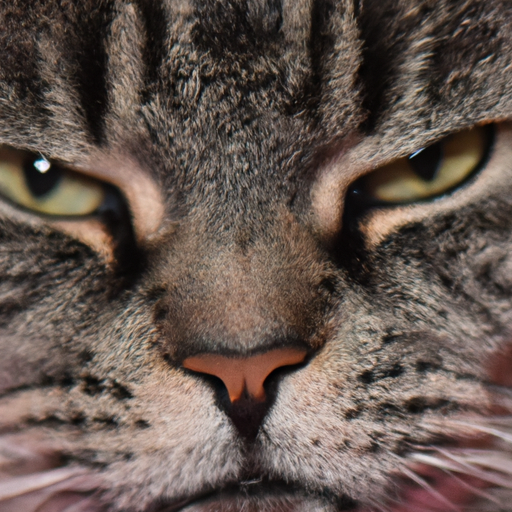
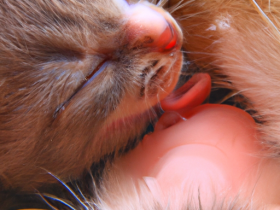
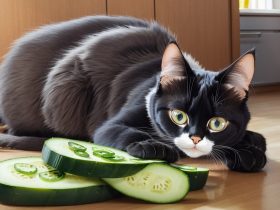
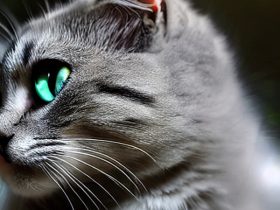
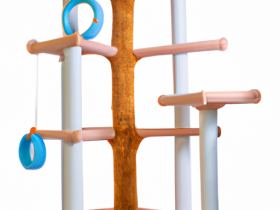
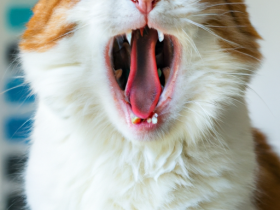
Leave a Reply
View Comments